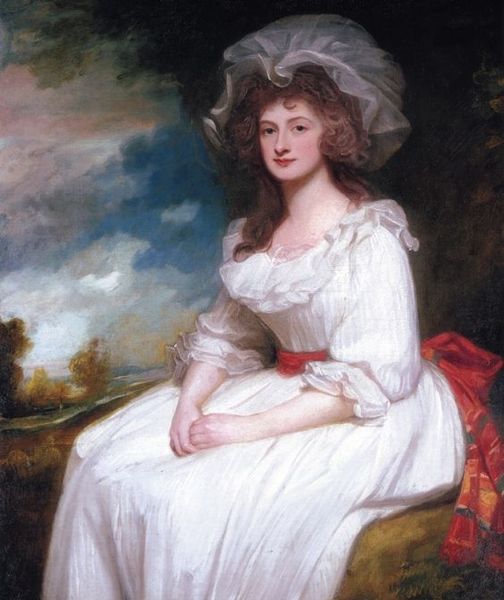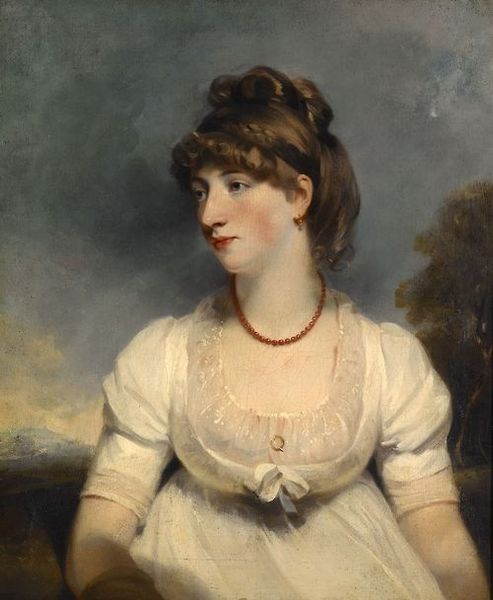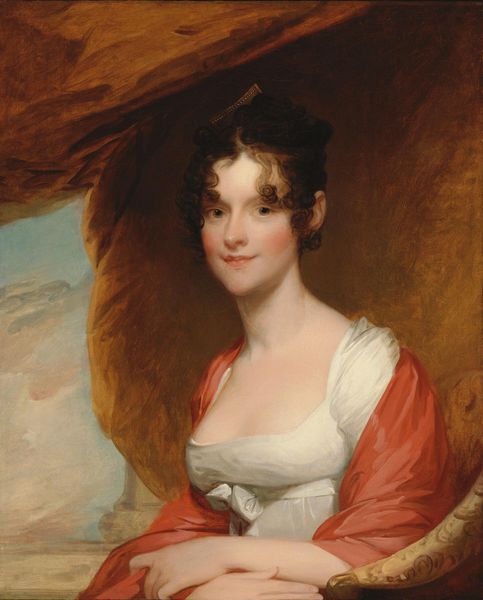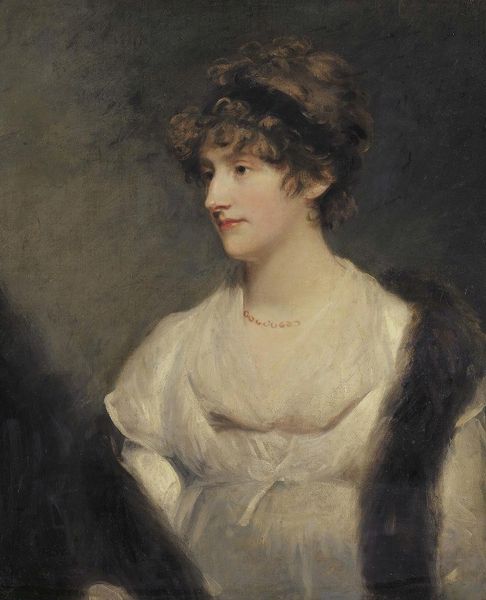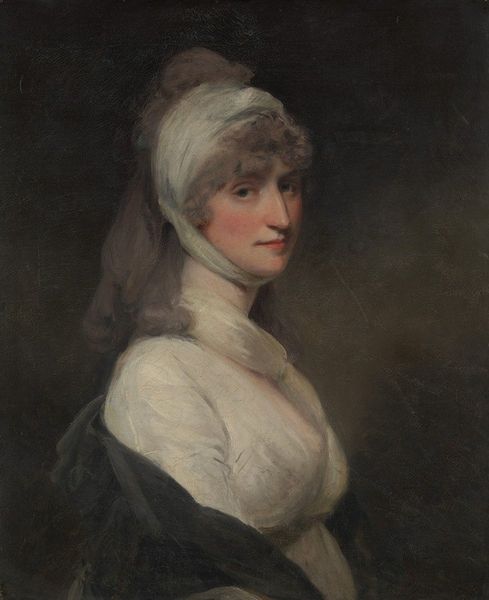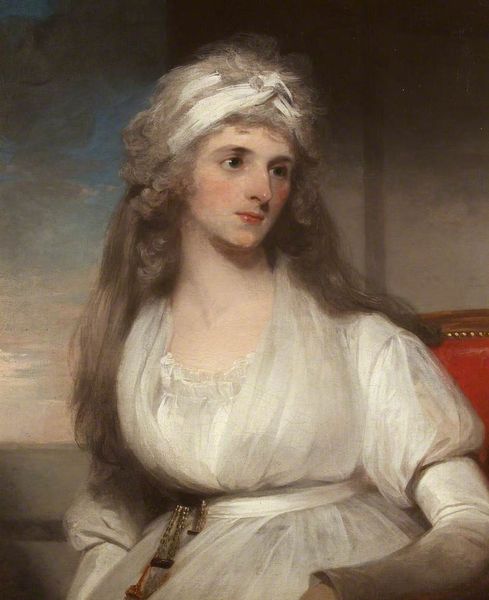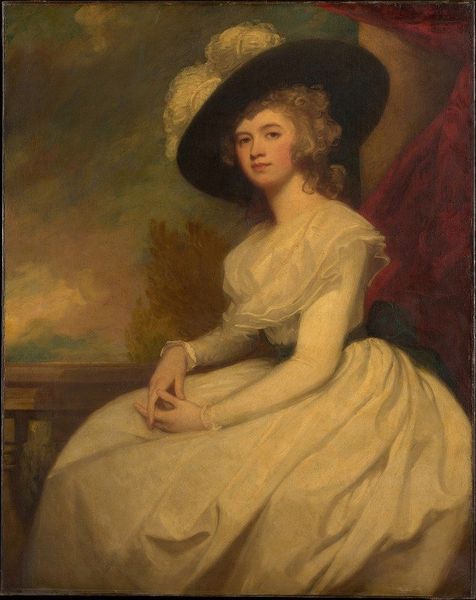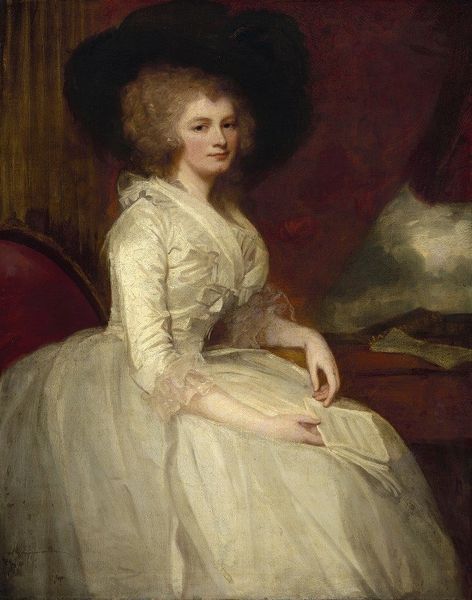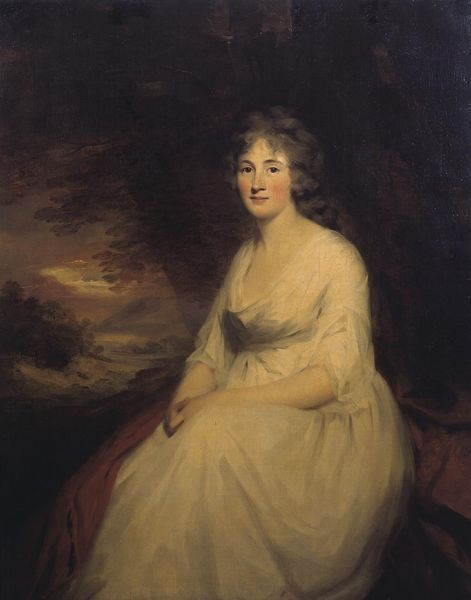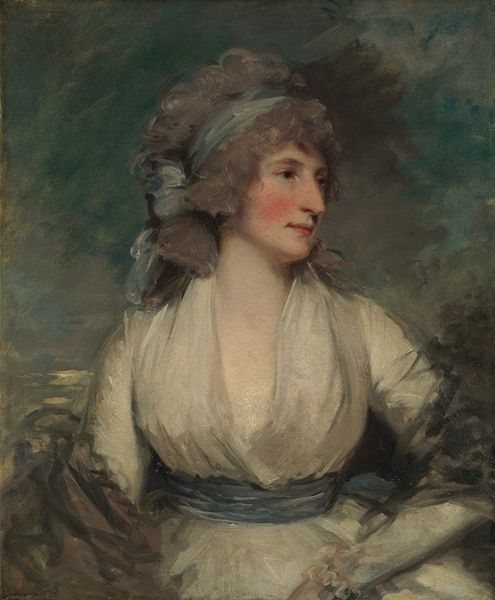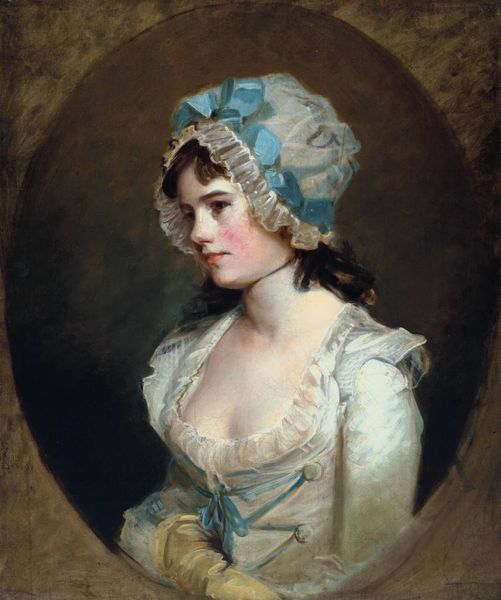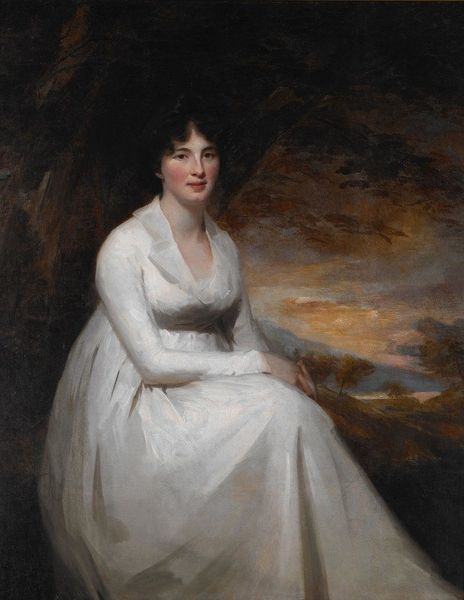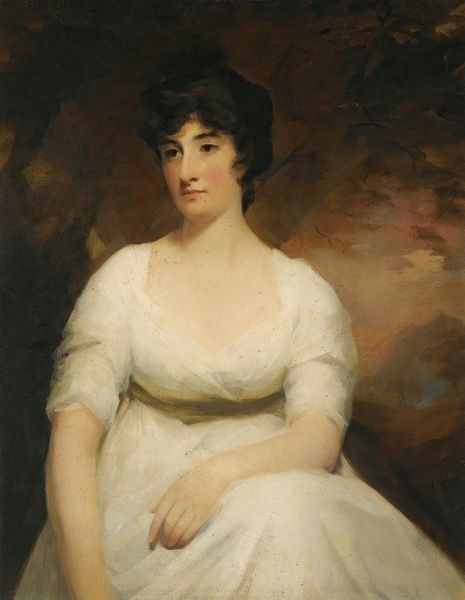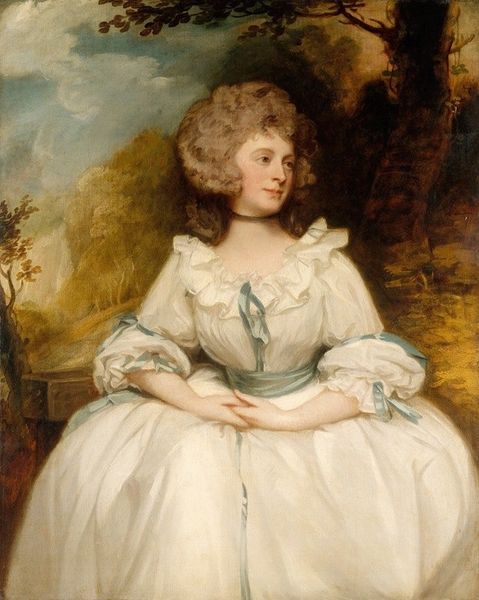
plein-air, oil-paint
#
portrait
#
plein-air
#
oil-paint
#
romanticism
#
history-painting
Copyright: Public Domain: Artvee
Editor: Here we have George Romney's "Portrait of Miss Elizabeth Tighe," made with oil paint. She appears to be wearing some sort of handmade bonnet, the clothing isn't particularly opulent and she's just barely offset in the composition. What do you make of it? Curator: The way Romney's handling of oil is rather typical for portraits of the period, catering to a rising merchant class that favored naturalism. Consider the raw materials involved: pigments laboriously ground and mixed, canvases stretched, and brushes crafted. Editor: That makes sense, but how does thinking about materials help us understand the painting? Curator: Everything starts there, no? This "plein-air" work is about social display, less so than about nature itself; observe the production costs implied by Miss Tighe's dress, the subtle signs of handmade production, contrasting with a burgeoning factory culture, for instance. Who was commissioning these paintings, and how were they trying to be seen? Editor: So you're suggesting we look beyond just the subject and technique to consider the social context? Curator: Exactly! We should ask ourselves how access to materials and artistic training affected who could produce and consume art like this. Also, where might this artwork have hung originally, and who would have been the intended audience? Editor: It’s interesting to consider it less as an idealized depiction and more as a document of class and production. Thank you! Curator: It has been my pleasure, let’s talk soon!
Comments
No comments
Be the first to comment and join the conversation on the ultimate creative platform.
